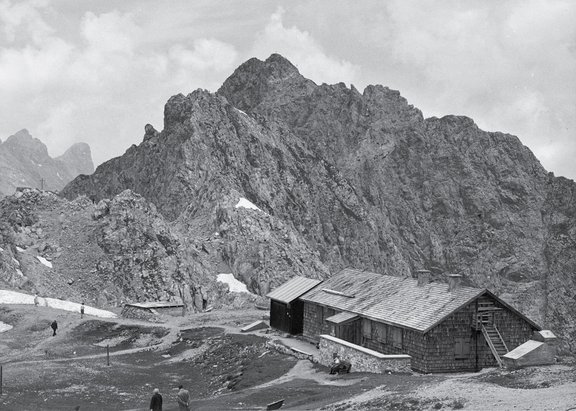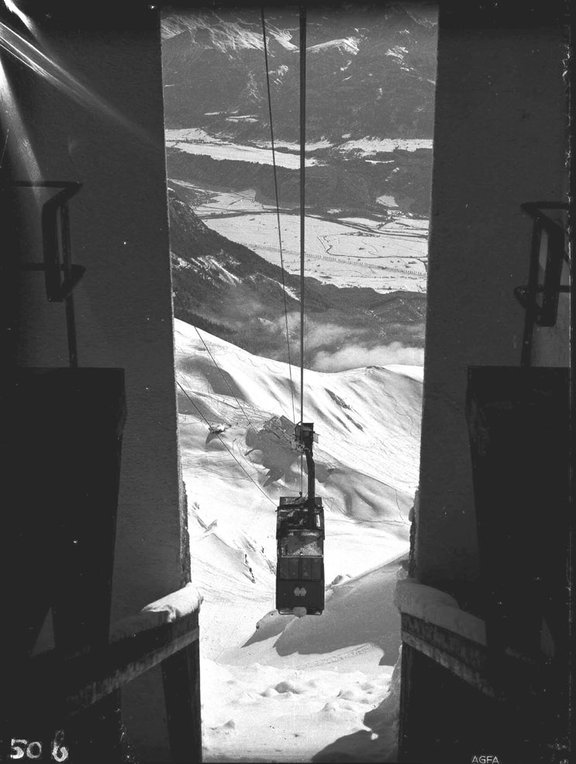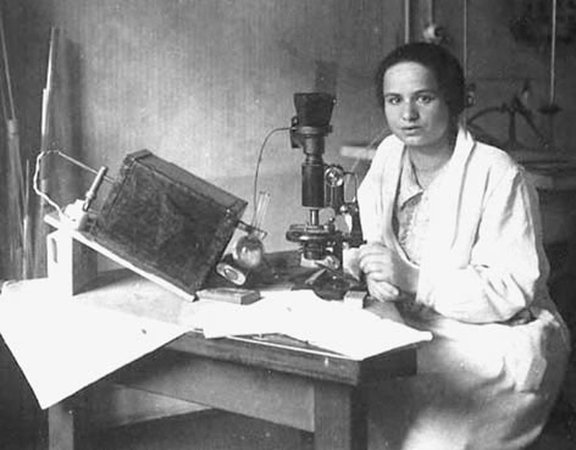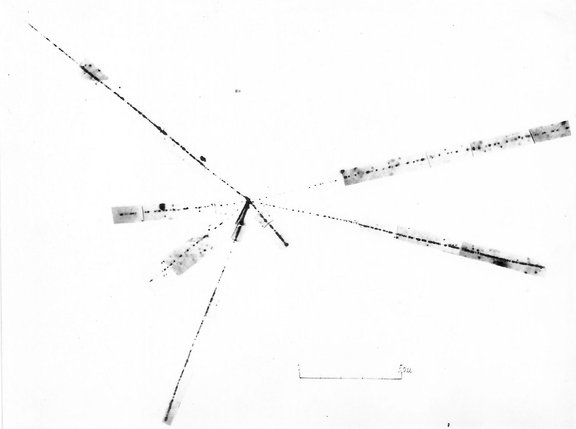Scientific history was written in a former construction shack of the Nordkettenbahnen: In 1931, Professor Victor Franz Hess (1883-1964) founded the world’s first high-altitude cosmic ray research laboratory on the Hafelekar. With its university and the Nordkettenbahn, Innsbruck was the ideal place.
Hafelekar Observatory
"When in the winter of 1930/31 my appointment to the University of Innsbruck came within reach, the plan matured in me to choose the Hafelekar (2300 m), situated on the Nordkettenkamm, which can be easily reached by cable car from the city of Innsbruck all year round in 40 minutes, as an observation site.
Thanks to the extraordinary cooperation of the municipality of Innsbruck and the management of the Innsbruck Nordkettenbahn, together with leading personalities from the University of Innsbruck, it has now been possible to realise this plan and set up a station for ultra-radiation research on the Hafelekar.
The station is housed in the accommodation building of the Nordkettenbahn, a solid wooden structure. The apparatus is kept at a constant temperature by electric heating and automatic control in a registration room with a floor area of 4.5 x 4.5 m, which is mounted on large concrete pillars so as to be vibration-free. Lead armour with a wall thickness of 10 cm encloses the high-pressure apparatus to shield it from the disturbing radioactive radiation of the ground. Another concrete base is used to set up other experimental arrangements for comparative or parallel measurements. For example, Kohlhörster radiation apparatuses were set up here, and the data from the high-pressure apparatus and electron counter used by Prof. Piccard (Brussels) on his stratospheric flight were compared with the data from my apparatuses by means of longer parallel measurements by Ing. Paul Kipfer, Prof. Piccard's assistant (December 1931 to February 1932).
Regular operation of the station began at the end of August 1931. The costs of the adaptation of the registration room and the operation in 1931/32 were raised by a subsidy from the Austrian-German Science Aid."
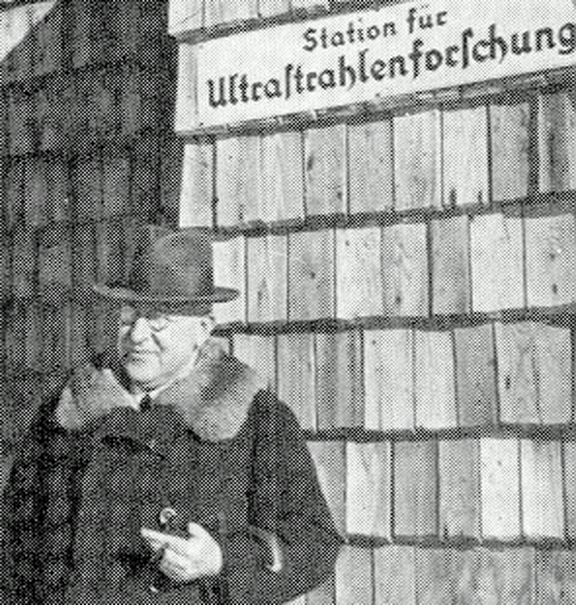
Hess in front of the Hafelekar observatory on the day after he received notification of the award of the Nobel Prize (November 1936)
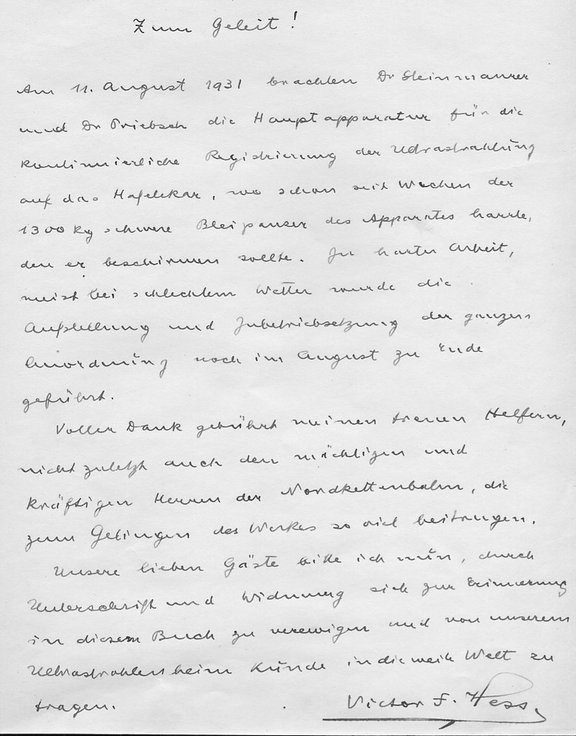
Guestbook
On 11 August 1931, Dr Steinmaurer and Dr Priebsch brought the main apparatus for the continuous registration of ultra-radiation to the Hafelekar, where the 1300 kg lead armour had been waiting for weeks to protect the apparatus. In hard work, mostly in bad weather, the installation and commissioning of the whole arrangement was completed in August.
Full thanks are due to my loyal helpers, not least also to the mighty and strong gentlemen of the Nordkettenbahn, who contributed so much to the success of the work.
I now ask our dear guests to immortalise themselves in this book by signing and dedicating it, and to spread the word about our ultra-railway home throughout the world.
– Victor Franz Hess
At high altitude
New instruments
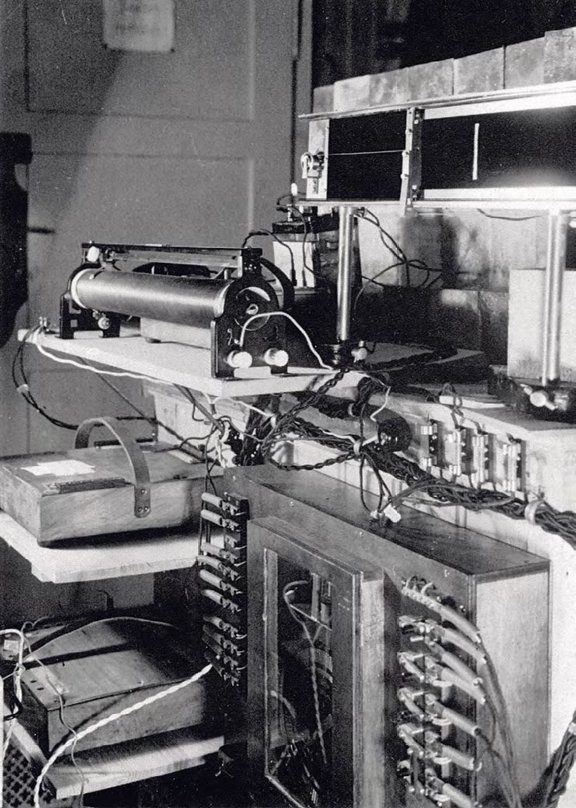
What was then elaborate equipment is used to automate the readings and thus make continuous recordings.
Hafelekar observatory, 1934
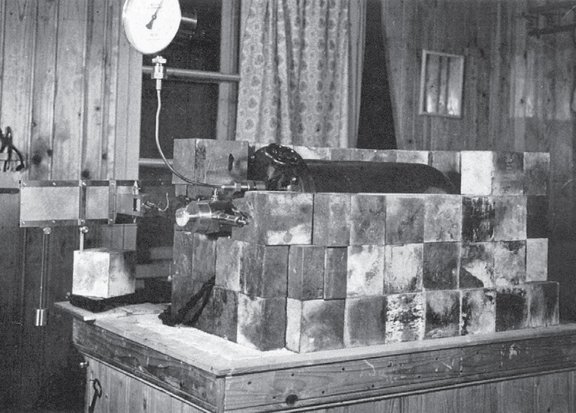
This instrument, named after the Königsberg (now Kaliningrad) physicist Eduard G. Steinke, can still be seen in the observatory today. It was used to study cosmic rays in the 1930s.
Hafelekar observatory, 1934
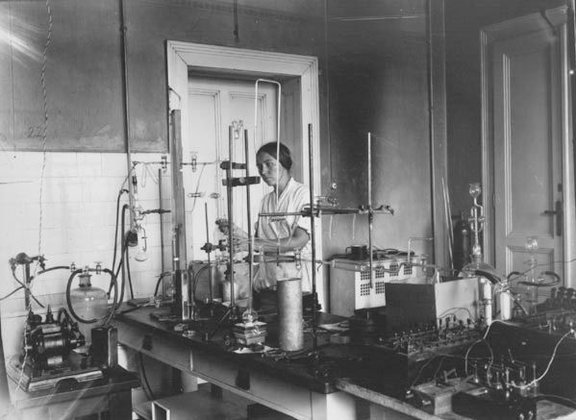
Together with her colleague Hertha Wambacher, Marietta Blau, who is Jewish, is able to do valuable research work before she has to flee from the Nazis to Oslo and then to Mexico in 1938.
Hertha Wambacher, Institute for Radium Research, Vienna, 1920s
Discoveries
Visit the historic observatory on the Hafelekar and learn more about the Nobel Prize winner and discoverer of cosmic rays Victor Franz Hess.


